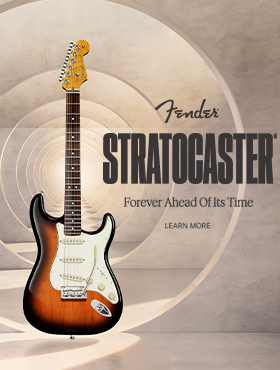 The Boss DM-2. God, how I love this pedal – easily in my top 5 (including the Boss VB-2, Electroharmonix Deluxe Memory Man, ProCo Rat and MXR Phase 90).
The Boss DM-2. God, how I love this pedal – easily in my top 5 (including the Boss VB-2, Electroharmonix Deluxe Memory Man, ProCo Rat and MXR Phase 90).
My love affair with this little maroon box of heaven began in my teens back in the mid 90’s. Being into thrashmetal and alternative rock, Delay was about as interesting to me then as a ukulele, however I was rediscovering the late 70’s/early 80’s post punk my Dad had around the house growing up as a kid; Echo and the Bunnymen, The Cure, Joy Division etc…
When I was somehow handed one for free (the same one I have now that’s been toured around Australia, Europe and the USA), it took me awhile to learn how to play it – and this is the key, the DM-2 isn’t a delay pedal you can slap on your board, stand on it and let it just warble along innocuously in the background like some digital delays. You can’t simply read a manual, set it and forget it. It is alive, and will be different with every guitar and amp you use. You kinda have to interact with and work with it, largely from the punch of your picking hand.
The DM-2 becomes intrinsically linked to your picking attack, offering up murky reverb like textures, gritty and warm slap back and, when paired before another quality digital delay, mixtures of sonic moodiness that really lend itself to darker and melancholic genres of electric guitar. It’s warm and full and sounds great loud. It is also AWESOME on snare drums and vocals, given how responsive to input signal strength it is. Just like playing guitar, hitting or singing hard gives more repeats, softer attack equals less.
So – analog/ue or digital?
Given the temperamental nature of tape echo units (try using an RE-201 live, I dare ya! Damn things are a law unto themselves…), Boss released the original DM-2 in 1981, as a smaller more compact version of the DM-1, released in 1978, which was a smaller and more consistent BBD version of the RE-201, released in 1974. A then-impressive 300ms of slapback was wrung out of the bucket-brigade chips in the DM-2, which kept the entire signal analogue, and introduced the degradation of the signal per repeat, which is part of the classic DM-2 character. There are those who’ll argue this BBD chip vs that one, however digital delays must convert the ‘analogue in’ guitar signal to digital, repeat it, then convert back to analogue on the way out, providing a usually crisper, tighter and somewhat ‘colder’ feel, which responds less to pick attack and more to knob settings. A loose analogy to vinyl vs CD/MP3 could be made here, but I’ll steer clear of that…preference is up to the user.
Now the bottom line – can the Dm-2w cop the moody, murky personality of the original? Absolutely.
In a word or three, it’s an extremely faithful recreation, with some great added features.
The new -2w has the same all original analogue signal path and I was hard pressed to hear much difference in the both the warm tone of the repeats and the characteristic dark decay between original and reissue. Like the vintage units, the new DM handles up to 300ms in S mode, flipping the toggle to increases this delay time up to 800ms, which is more than enough for an analogue delay.
I have to say that in C mode, the Delay sound is clearer and leans slightly towards a crisper tone. In this regard it reminded me of my old EHX Memory Man, which itself is a clearer sounding analogue delay than the original DM-2. However, having the old school ‘murk’ and the newer, clearer tone in one box is tre cool – if you’ve ever wanted a legit Boss delay that straddles the line between the dynamics of the old DM-2 and the clarity of something like a DD-3, then the DM-2w in C mode is IT.
Remember, the hotter the signal, the more punch the delay will receive, so putting a boost in front of the DM-2w kinda decreases the touch sensitivity you get from your picking hand. That being said, this pedal rocks into a dirty amp as much as it sounds fantastic when used clean.
Other features that the new version brings to the table include an expression in jack marked ‘Rate’ for governing delay time (this can get freaky real quick – viva la oscillation!), as well out a dry out for stereo rigs – and it sounds huge.
Honestly, if I wanted to retire my old DM-2, I would be completely happy with the new DM-2w for tone and feel. Boss have again nailed it with this new recreation and for the couple hundred bucks or thereabouts that they’re going for, it would be perfectly affordable for most players to have one sitting next to a DD-3 as another flavour of echo. Total win.

Brothers from another mother: This reviewer’s vintage early ’83 DM-2 and the new and equally as awesome DM-2w. Git yer analogue on!!
Snapshot:
The Sound – 5/5
Ease of Use/Control Layout – 5/5
Value for money – 5/5
Overall Verdict – 5/5
Jesse Delaney is the singer and guitarist in Melbourne alternative rock band Crying Sirens
http://cryingsirens.com/


